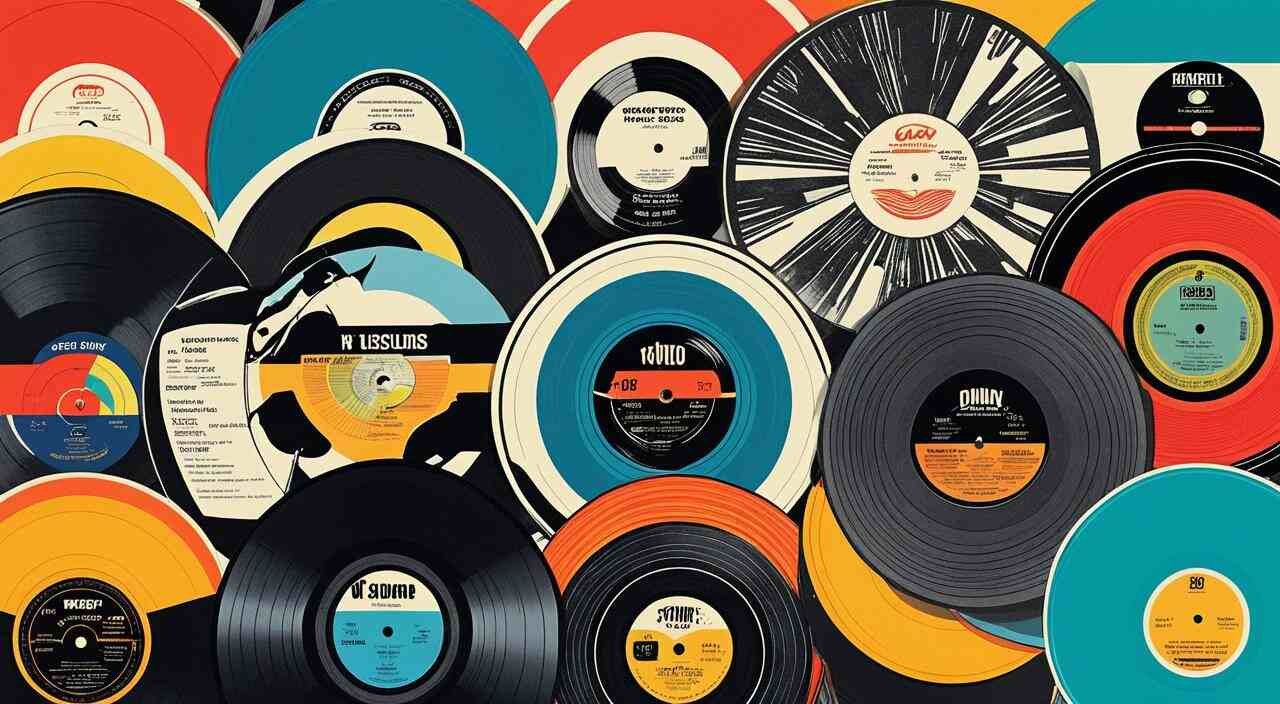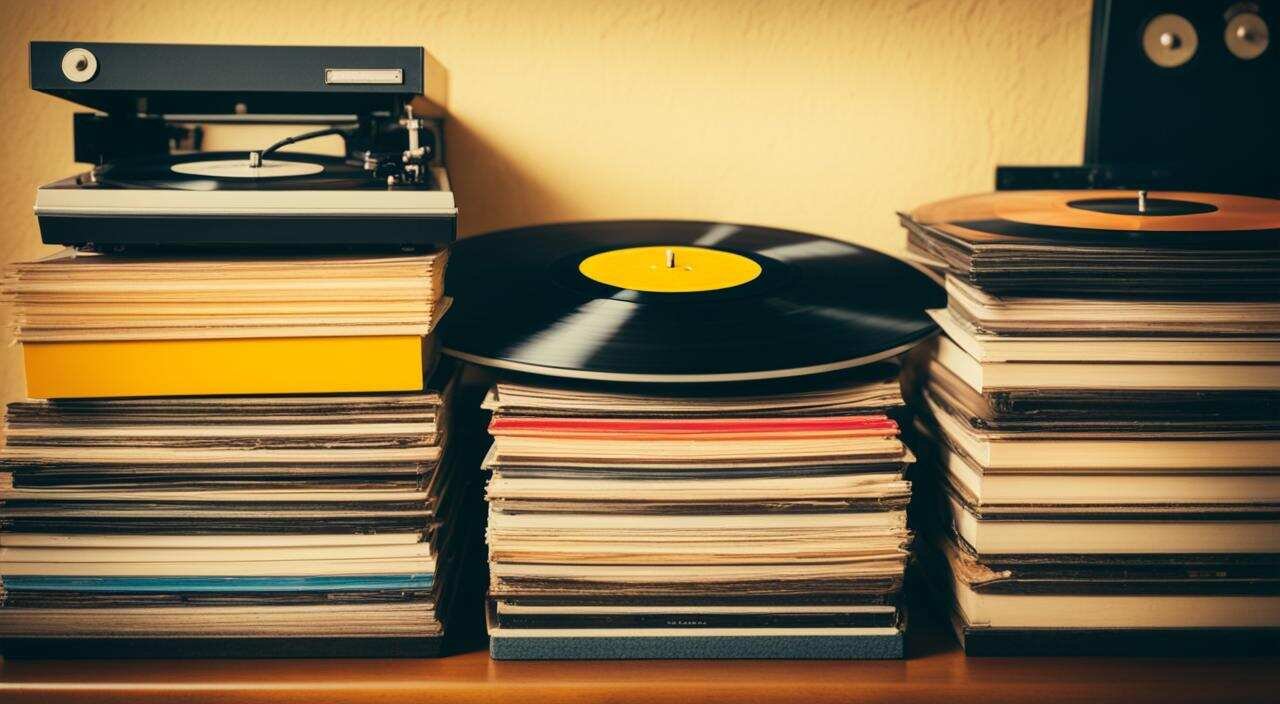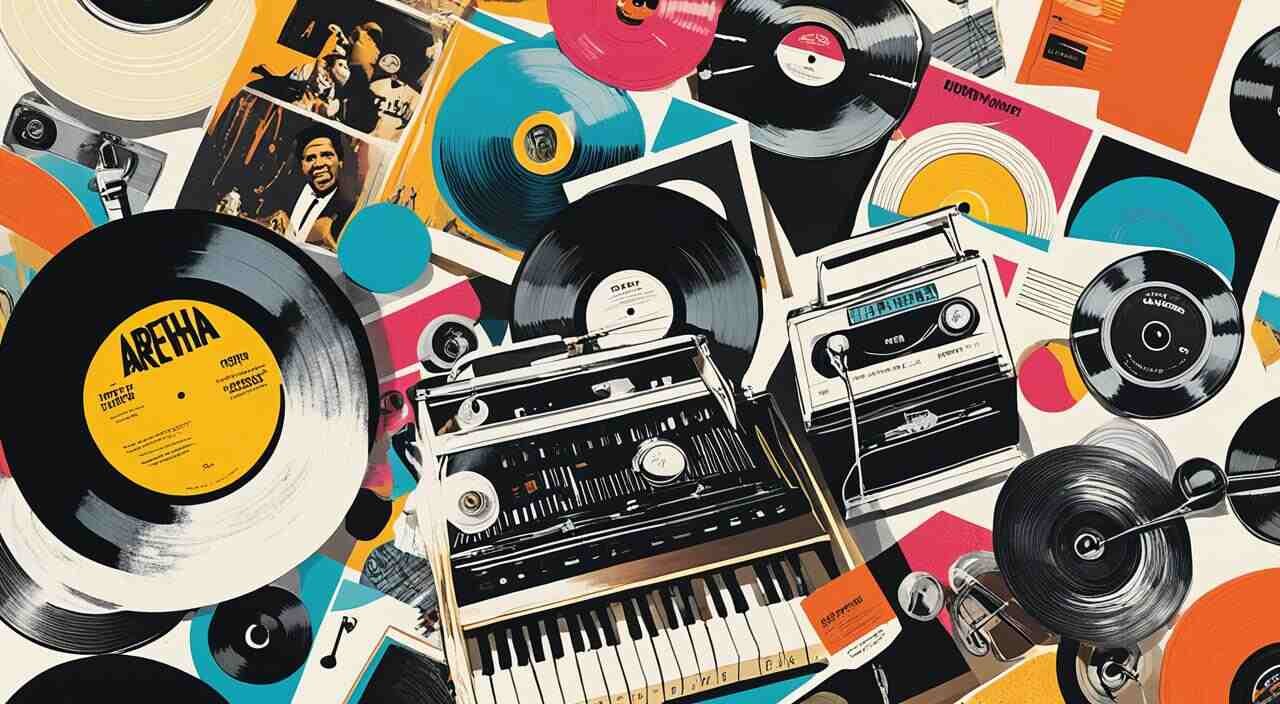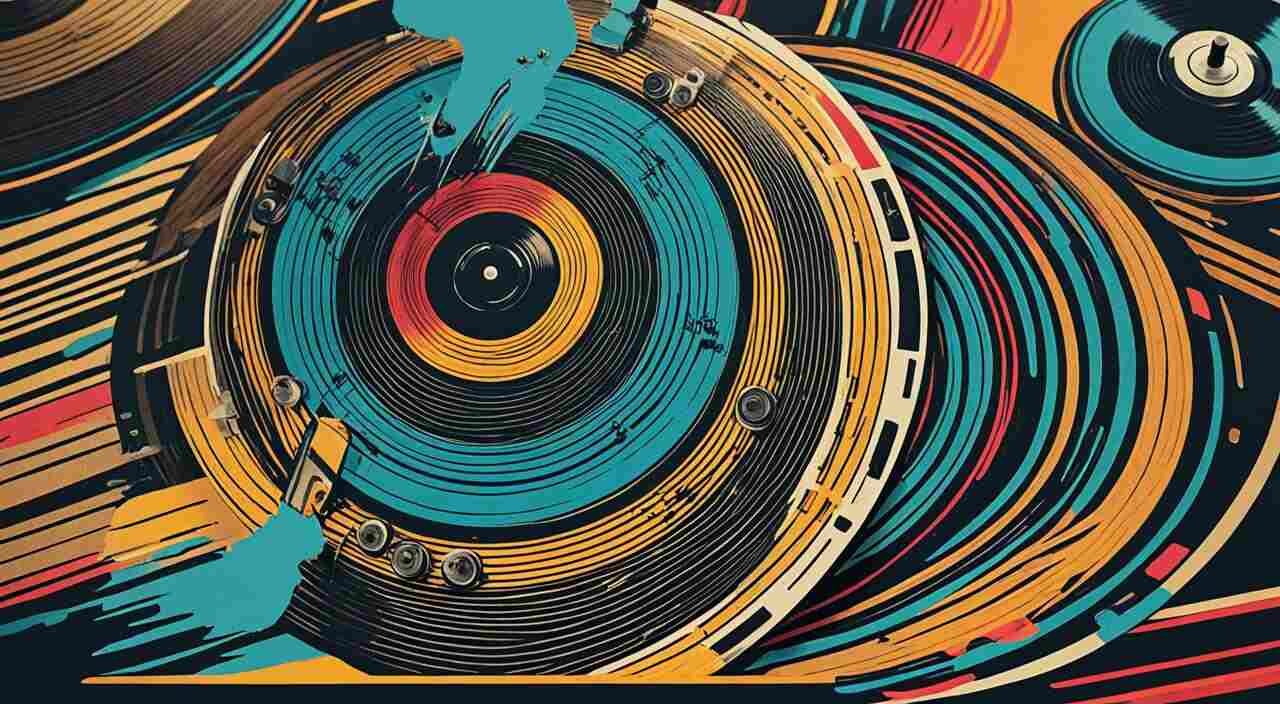Vinyl records have had a fascinating journey throughout history, experiencing periods of both popularity and decline. Understanding the timeline and the factors that contributed to their rise and fall can provide valuable insights into the enduring appeal of this timeless music format.
In the early nineties, vinyl records enjoyed a significant surge in popularity, accounting for 14% of the album market. This resurgence was driven by a desire for the full, rich sound that vinyl records provide. The distinct warmth and depth of vinyl recordings captivated music enthusiasts, creating a unique listening experience.
The history of vinyl records dates back to the late 1800s when the first records were made of wax cylinders. Over time, advancements in materials and manufacturing processes led to the introduction of flat disc-shaped records made of shellac in 1890. In 1912, a phenol-formaldehyde resin called Condensite emerged as a superior alternative to shellac, revolutionizing the industry.
The vinyl revolution continued with the launch of the first vinyl long-playing record in 1930, which offered longer playtime and better sound quality. In 1948, PVC records, also known as LPs, were introduced, featuring a quieter surface and enhanced durability. The composition of vinyl records has evolved over the years, with a focus on producing thick, heavy records with deep grooves for optimal sound reproduction.
Key Takeaways:
- Vinyl records experienced a surge in popularity during the early nineties, accounting for 14% of the album market.
- The history of vinyl records dates back to the late 1800s, with significant advancements in materials and manufacturing processes.
- The introduction of flat disc-shaped records made of shellac in 1890 and PVC records in 1948 revolutionized the industry.
- Vinyl records provide a distinct listening experience, characterized by a full, rich sound and deep grooves.
- The fascination with vinyl records continues to endure, driven by their unique sound quality and nostalgic appeal.
The Evolution of Vinyl Records
Vinyl records have a rich history that has seen them evolve over time, undergoing changes in manufacturing techniques and the materials used. Understanding the evolution of vinyl records provides insights into the advancements in the industry and their impact on the listening experience.
In the late 1800s, the first records were made of wax cylinders. These cylindrical records revolutionized the way people could enjoy recorded sound. However, this format was soon replaced by flat disc-shaped records made of shellac, introduced by Emile Berliner in 1890. Shellac records dominated the industry until the 1950s when a superior alternative emerged.
In 1912, the introduction of Condensite, a phenol-formaldehyde resin, revolutionized vinyl records manufacturing. This new material offered enhanced durability and sound quality compared to the previously used shellac records.
The next major milestone in vinyl records history came in 1930 with the launch of the first vinyl long-playing (LP) record. These LPs revolutionized the music industry by allowing for longer playing times and more music to be included on a single record. This format quickly gained popularity among music enthusiasts.
However, it wasn’t until 1948 that vinyl records, known as PVC records or LPs, became widely accessible to the public. PVC records offered a quieter surface and increased durability, further improving the listening experience.
Over the years, manufacturers have continued to refine the composition of vinyl records, aiming to produce thick and heavy records with deep grooves that enhance sound quality. These advancements have resulted in the vinyl records we know and love today.
The manufacturing process of vinyl records involves several steps, from mastering the audio content to pressing the vinyl and adding the label. Each stage requires precision and expertise to ensure the final product meets the highest standards of quality.
The Vinyl Records Manufacturing Process
| Stage | Description |
|---|---|
| Mastering | The audio content is transferred to a master disc, which serves as the template for creating the stampers used in pressing the vinyl. |
| Plating | The master disc is used to create metal parts known as stampers. These stampers are then used in the pressing process to recreate the audio on the vinyl. |
| Pressing | Vinyl pellets are heated and pressed between the stampers, forming the grooves and producing the final vinyl record. |
| Labeling | After pressing, the vinyl record is labeled with essential information, such as the artist, album, and track names. |
| Quality Control | Each vinyl record undergoes a thorough inspection to ensure it meets the necessary quality standards before being packaged and distributed. |
The vinyl records manufacturing process requires technical expertise and precision to ensure the highest quality sound reproduction. From mastering to packaging, every step plays a crucial role in creating a vinyl record that delivers a premium listening experience.
The Decline and Resurgence of Vinyl Records
During the 1970s, the introduction of new music formats, such as cassette tapes and compact discs, posed a significant challenge to vinyl record sales. The convenience and portability of these new formats appealed to consumers, leading to a decline in vinyl record sales. In fact, vinyl records represented only 0.2% of total sales revenue in 2004.
However, the vinyl records market experienced a remarkable resurgence in the following years. Starting in 2007, vinyl record sales began to increase year over year, signaling a renewed interest in this vintage format. This resurgence can be attributed to a variety of factors that have contributed to the renewed popularity of vinyl records.
- Events like Record Store Day: The annual celebration of independent record stores has played a significant role in promoting vinyl records sales and generating excitement among music enthusiasts. Record Store Day events feature exclusive vinyl releases, special editions, and live performances, attracting vinyl records collectors and music lovers alike.
- Increased interest in music collecting during the pandemic: The COVID-19 pandemic has led to an increased focus on home entertainment and leisure activities. Many people turned to vinyl records collecting as a means of enhancing their at-home music experiences, contributing to the rise in vinyl records sales.
- Nostalgia for past eras: Vinyl records evoke a sense of nostalgia for music enthusiasts. Collectors and listeners appreciate the tactile experience of interacting with a physical format and the authentic sound reproduction that vinyl records offer. Vinyl records allow individuals to reconnect with the past and rediscover the joy of listening to music in a tangible form.
- Digital burnout: Despite the convenience of digital music streaming, many consumers have experienced a sense of fatigue from the intangibility and overwhelming volume of online music catalogs. Vinyl records provide a refreshing and immersive alternative that encourages a more mindful listening experience.
- Collectability and aesthetic appeal: Vinyl records have become highly sought-after collectibles among music enthusiasts. The limited edition releases, unique artwork, and exclusive vinyl colors make vinyl records a distinctive and visually appealing addition to any collection. The resurgence of vinyl records has not only captured the hearts of passionate collectors but has also attracted new fans who appreciate the allure of these physical artifacts.
As a result of these factors, vinyl records have reclaimed their position as a significant player in the music market. In recent years, vinyl records have even surpassed CDs as the most popular physical recorded music format. The resurgence of vinyl records has not only revitalized the industry but also fostered the growth of independent record stores, creating vibrant community hubs for music enthusiasts and collectors.

Example of Vinyl Records Sales Growth
| Year | Vinyl Records Sales (in millions) |
|---|---|
| 2007 | 1.0 |
| 2008 | 1.7 |
| 2009 | 2.8 |
| 2010 | 4.6 |
| 2011 | 6.1 |
| 2012 | 8.0 |
Conclusion
The resurgence of vinyl records has had a significant impact on the music industry. As the demand for vinyl records has grown, independent record stores have experienced a revival and have become vital community hubs for music culture.
However, manufacturers have faced challenges in keeping up with this increased demand, leading to production delays and supply chain issues. To address this, efforts have been made to expand and open new record-pressing plants to meet the growing needs of the vinyl records market.
Despite these challenges, the vinyl records market continues to thrive. Factors such as Record Store Day, the pandemic, nostalgia, and digital burnout have played a role in driving the resurgence of vinyl records. Additionally, the collectability and aesthetic appeal of vinyl records have captured the hearts of music enthusiasts.
Vinyl records have proven to be a timeless format that continues to captivate audiences. With their warm sound and tangible nature, vinyl records offer a unique and immersive listening experience. The vinyl records market is here to stay, providing a sense of nostalgia and a connection to the past, while also attracting new generations of music lovers.
FAQ
When were vinyl records popular?
Vinyl records experienced a surge in popularity during the early nineties, accounting for 14% of the album market.
What is the history of vinyl records?
Vinyl records date back to the late 1800s when they were initially made of wax cylinders. In 1890, flat disc-shaped records made of shellac were introduced and dominated the industry until the 1950s.
How have vinyl records evolved over the years?
The composition of vinyl records has evolved, with advancements in materials and manufacturing processes. In 1930, the first vinyl long-playing record was launched, and in 1948, PVC records or LPs were introduced, offering a quieter surface and increased durability.
Why did vinyl record sales decline?
The introduction of new music formats, such as cassette tapes and compact discs, led to a decline in vinyl record sales starting in the 1970s. CDs became the dominant format in the 1980s and 1990s.
What factors have contributed to the resurgence of vinyl records?
Various factors have contributed to the resurgence of vinyl records, including events like Record Store Day, increased interest in music collecting during the pandemic, nostalgia for past eras, digital burnout, and the collectability and aesthetic appeal of vinyl records.
How has the resurgence of vinyl records impacted the music industry?
The resurgence of vinyl records has revitalized independent record stores, which have become vital community hubs for music culture. Manufacturers have faced challenges in meeting the growing demand, leading to production delays and supply chain issues.








Leave a Reply